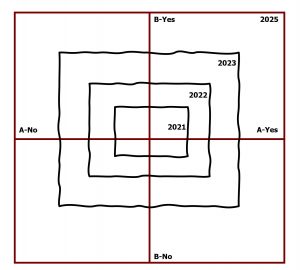From the Ask Tom mailbag:
Question:
I have been with the company for only 7 months now, and am very thankful I’ve found this site.
The biggest problem I face is three years of rapid growth in a family owned company. The culture is not keeping up with the changes in methods required to handle the increased volume. People still are working from memory instead of set processes, and are reluctant to train others in what they were solely responsible for years. Trying to force these changes seems to only increase turnover.
How can I influence my “older,” and most valued for technical skills, employees to change their ways of thinking?
Response:
If you continue to force these changes, turnover will eventually remove the resistance, and that’s not likely your intention.
In the meantime, think about these two things, planning and execution. Of the two, which is more difficult?
Flawless execution, to the fundamental processes, with speed and accuracy is best accomplished under a form of organization government known as a dictatorship; tyrannical may be the most effective. (BTW, you cannot be the dictator).
But, to be able to execute flawlessly, requires a planning process to support it. And this planning process must be created under a very different form of organizational government, a democracy. I know it is slow, requires participation, accommodation, discussion with divergent points of view, but it is absolutely necessary.
Plan like a democracy, execute like a dictatorship. It sounds as if you have things backwards. You are planning like a dictator, and you experience democratic execution. You are dictating and forcing processes, but the execution is slow, with much discussion (grumbling), divergent points of view and resistance.
You have to reverse the process. Plan like a democracy, execute like a dictator. Call a meeting. Explain the situation. You have increasing volume and the need for greater speed. Tell them the meeting will reconvene in twenty four hours, at which time, you will listen to their plan to handle the increased volume. Adjourn the meeting.
___
This process is explained in more detail in Driving Force by Peter Schutz.
